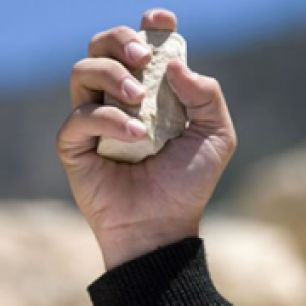Women's Empowerment and Leadership Development for Democratisation
- العربية
- English
- Français
- Bahasa Indonesia
- اردو
Frequently Asked Questions About Whipping

Originally published on the Violence is Not Our Culture campaign website, here
What is Whipping?
Whipping, caning, lashing, and flogging are terms which refer to the judicial punishment by which a person is lashed with a long, heavy rattan (similar to a bamboo stick) or a whip. Historically, whipping has been used as a punishment in almost every religious and cultural setting, from Ancient China, Rome and Greece to Mayan and Indigenous American communities, to the Judeo-Christian and Islamic contexts. Its use as a legal punishment in secular settings was institutionalized with the creation of English Common Law, from which many countries base their present day penal codes. As such, whipping remains an extremely widespread practice, though the exact method of execution and severity of infliction differ according to specific legislation or cultural practices. While some countries have made moves to outlaw the practice, the rising politicization of religion and culture has led other countries to adopt and increase the use of whipping as a punishment, most notably the Islamic Republic of Iran, Afghanistan, and parts of Nigeria and Indonesia.
For what crimes is whipping prescribed?
In some contexts, whipping is a mandatory punishment for a variety of offences involving the use or threat of violence against a person, such as rape and robbery, as well as for non-violent offences such as vandalism, drug use and trafficking, and violation of immigration laws. For other convictions involving the use of force, such as kidnapping, or voluntarily causing grievous harm, whipping is generally issued according to judiciary discretion. According to most interpretations of ‘Islamic Law’, whipping is prescribed for many of the same offences as above, but extends further to so called ‘crimes of morality’. These include ‘illicit sexual activities’ (here defined as extra-marital relations), ‘alleged’ adultery, fornication, consensual homosexual activities, prostitution, and rape (both for the perpetrator and victim.) Given that there is no unified Islamic Law, the implementation of Sharia varies vastly across countries, as do the range of ‘crimes’ for which whipping is prescribed. In Iran, for example, according to Article 102 of the constitution, “Women who appear on the streets and in public without the prescribed ‘Islamic Hijab’ will be condemned to 74 strokes of the lash”. Participating in mixed-gender parties and walking alone with a non-familial member of the opposite sex are also cause for punishment by lashing. In Saudi Arabia, women appearing in public without a male guardian can be whipped. With the implementation of Sharia in the Aceh province of Indonesia, curfews have been imposed by which men and women may not be out in public together after dark, as have increasingly conservative restrictions on dress codes for women. Not abiding by these recently imposed regulations often results in legal convictions for which lashing is prescribed.
Where is whipping practiced today?
Whipping continues to be practiced in Africa, Asia and the Caribbean, in such countries as Saudi Arabia, the Bahamas, the Islamic Republic of Iran, the Sudan, the United Arab Emirates, Singapore, Libya, Yemen, Malaysia, and Brunei, among others. In countries where whipping is not enshrined in national legislation, the practice is often mandated by fatwas (a religious opinion), village councils, or customary courts. Such cases have recently been documented in Indonesia, Nigeria, Afghanistan, and India. In fact, whipping of women is increasingly being carried out by men that have no affiliation to national legal or judicial bodies, but who are taking matters into their own hands to punish women for what they arbitrarily deem as ‘moral’ offences.
How is whipping carried out?
The practice of whipping varies greatly depending on the country or community. The exact methods by which whipping is sentenced and carried out is usually specified in the criminal or penal code of the nation, or determined by village councils or community members.
What is the relationship between whipping and women’s rights? Many countries have made the move to stop the whipping of women, prescribing it only as a suitable punishment for men of a certain age. In other contexts, especially those in which females are seen as the agents of communal honour, women are far more likely to be subject to whipping because the crimes for which whipping is prescribed are inherently gendered in nature. For example, in most societies that enforce dress codes, restrictive measures on dress are more strictly imposed upon women than men. Therefore, ‘crimes’ of improper dress are usually applied to women. In some communities, when a woman is in proximity to a male that is not her relative it is seen as ‘immoral behaviour.’ Even if no direct contact has been made, this becomes reason to have women whipped. These transgressions of personal freedoms, whereby women are not allow to walk freely in public spaces, are acute examples of ‘culture’ being used to restrict women’s autonomy, mobility, and agency. Disturbingly, these trends are on the rise in both Muslim and non-Muslim contexts. On other occasions, where women have been subject to sexual harassment or violence, they are often seen by their community to have brought shame and dishonour upon themselves, their families or their communities, and are then whipped for this ‘indecency.’ Similarly, there are occasions where the state itself orders rape victims to be whipped for having committed the ‘crime’ of sex outside of wedlock. Women are thus doubly punished for having committed no crime at all. Here again, ‘religion’ and ‘culture’ are being used as illegitimate justifications to form local and national laws that are heavily gendered and can violate women’s human rights.





